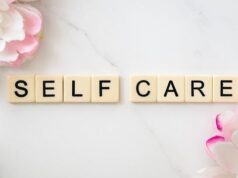In the intricate dance of relationships, understanding one another’s emotional landscapes is paramount. While confidence can be an attractive trait, the shadows of insecurity often lurk just beneath the surface, profoundly impacting a man’s behavior and interactions. Recognizing the signs of insecurity in men is essential for fostering healthy connections and nurturing mutual respect. In this exploration, we will unveil the key indicators that reveal a man’s insecurities, examining how these manifestations can shape his relationships and influence his self-perception. By bringing awareness to these subtle cues, we can better navigate the complexities of our interactions and support those who may be struggling with self-doubt.
Recognizing the Signs of Insecurity in Men
Understanding a man’s insecurities is essential for fostering a healthy relationship. Insecure men often exhibit specific behaviors that can hint at their underlying feelings of inadequacy. Common indicators include:
- Excessive jealousy: A constant suspicion of loyalty can signal deep-rooted fears of inadequacy.
- Low self-esteem: Frequent self-deprecating remarks or a lack of confidence can reveal a struggle with self-worth.
- Overprotectiveness: An overbearing demeanor, especially concerning their partner’s interactions, may stem from fear of abandonment.
Additionally, an insecure man may seek constant reassurance or feedback, reflecting an internal need for validation. This need can manifest through:
- Fear of criticism: He may become defensive or withdrawn when faced with constructive feedback.
- People-pleasing tendencies: Beyond healthy consideration for others, this can indicate a desire to be liked at any cost.
- Emotional volatility: Sudden changes in mood can signal that underlying insecurities are affecting his emotional stability.
The Role of Communication in Identifying Insecurity
Communication serves as a vital lens through which insecurity can be identified in a man. When an individual grapples with feelings of inadequacy, his verbal and non-verbal cues often reveal underlying doubts. Frequent second-guessing of one’s opinions, hesitant speech, or avoiding eye contact can signal insecurity. Moreover, if conversations often pivot towards seeking reassurance or validation, it may indicate a struggle with self-confidence. This can emerge through remarks that downplay his achievements or highlight anxieties about being judged, suggesting a deeper need for external affirmation.
Additionally, communication patterns can showcase how insecurity affects his relationships. A man who exhibits clinginess or displays jealousy may project his feelings of insecurity onto his partner. He might throw out provocative questions or express fear of abandonment, both of which can create emotional strain. Poor communication or a tendency to withdraw in moments of vulnerability can also suggest that he is concealing his insecurities rather than openly addressing them. Ultimately, the nuances of dialog provide valuable insights into his emotional state, helping to articulate the challenges he faces in expressing himself authentically.
Understanding Body Language: What His Actions Reveal
Observing a man’s body language can provide insightful clues about his emotional state, particularly regarding insecurity. When a man feels unsure of himself, his non-verbal cues often manifest as closed-off postures such as crossed arms or hunched shoulders. These positions can indicate a desire to shield himself from perceived judgments or criticisms. Additionally, a lack of eye contact can signal that he is overwhelmed or uncomfortable in the situation, revealing his inner turmoil and self-doubt.
Moreover, subtle habits may emerge that further illustrate his insecurities. For instance, frequent nail-biting or fidgeting with objects can be clear indicators of stress or anxiety. Other signs, like rapid blinking or tapping fingers, often suggest impatience or a racing mind. If you notice these behaviors, it’s crucial to pay attention to the context, as they can help you understand his emotional landscape and create an environment that encourages open communication.
The Impact of Comparisons on Male Self-Esteem
In the quest for self-acceptance, many men grapple with the pressure to conform to societal ideals, often influenced heavily by media representations. These idealized images can foster an environment ripe for comparison, where men measure their worth against the often unattainable standards of muscularity and success portrayed in advertising and social media. This constant evaluation not only feeds into insecurities but can also lead to a cycle of low self-esteem, where worth is equated with physical appearance or social status.
Furthermore, as men engage with platforms like Instagram, they may find themselves immersed in a visual culture that emphasizes superficial qualities, inadvertently cultivating feelings of inadequacy. Signs of this unsettling comparison can manifest in various ways, including:
- Overemphasis on body image: Frequently mentioning or obsessing over physical attributes.
- Social withdrawal: Avoiding situations where comparisons may arise.
- Competitive behavior: Trying to outperform others in terms of appearance or lifestyle.
Recognizing these patterns can be crucial in understanding , highlighting the importance of fostering a healthier self-image beyond societal expectations.
Navigating Jealousy: A Red Flag for Insecurity
Jealousy can often serve as a compass pointing to deeper insecurities within a relationship. It’s not uncommon for men who struggle with their self-worth to exhibit possessive behavior, as they may feel threatened by situations that highlight their partner’s independence or attractiveness. Recognizing the signs of jealousy can allow you to distinguish between natural relationship dynamics and indicators of deeper issues. Look for behaviors such as:
- Frequent accusations of infidelity without reason.
- Excessive monitoring of your whereabouts and interactions.
- Unjustified anger when you spend time with friends or engage in personal activities.
A healthy relationship thrives on trust and open communication. In contrast, jealousy rooted in insecurity may lead to a cycle of unhealthy dependency and emotional distress. It’s essential to address these feelings head-on rather than allowing them to fester. Engaging in conversations about boundaries, discussing feelings of insecurity, and fostering a supportive environment can be pivotal. Consider the following strategies to navigate these moments:
- Encourage open dialog about concerns and feelings.
- Reassure your partner of your commitment.
- Maintain personal space to foster independence.
How Past Experiences Shape Current Behavior
Past experiences can leave enduring marks that influence both thoughts and behaviors in individuals. For many, relationships and interactions in formative years contribute significantly to one’s self-image and perceived worthiness. Patterns of behavior can emerge, often as coping mechanisms developed in response to earlier emotional challenges or traumas. An individual who faced criticism or rejection may become overly sensitive to similar situations as an adult, often leading to symptoms of insecurity. This sensitivity can manifest in various ways, including clinginess or jealousy, as a man navigates new relationships with the echoes of his past experiences still guiding his reactions.
The landscape of past emotional experiences often shapes a man’s current responses in relationships. Insecure behaviors might thus reveal themselves as challenges in communication or a reluctance to express vulnerability. When confronted with intimacy, such individuals may retreat or exhibit defensiveness, reflecting an internal struggle perpetuated by previous disappointments or feelings of inadequacy. Understanding this connection can offer valuable insights; recognizing these signals can aid in fostering healthier dynamics, both for him and for those around him, guiding the way toward improved self-awareness and growth.
The Connection Between Achievement and Self-Worth
Many individuals unknowingly tether their self-worth to their accomplishments, a phenomenon that often emerges from societal expectations and personal experiences. This connection can manifest in a constant need for validation through success, leading to a fragile self-esteem that fluctuates with achievements. As a result, when faced with setbacks or failures, these individuals may experience a significant drop in their self-esteem, revealing an underlying insecurity that can affect their relationships and self-perception.
Recognizing this pattern is crucial for personal growth. It’s essential to cultivate self-awareness by identifying moments when self-worth is contingent upon achievements. Consider the following aspects to understand this connection better:
- Challenge societal norms that equate worthiness with success.
- Embrace a mindset that values intrinsic qualities and personal growth over external validation.
- Develop coping mechanisms for when achievements do not meet expectations, allowing for a healthier self-image that isn’t reliant on performance.
Understanding and redefining the relationship between achievement and self-worth can pave the way for deeper, more fulfilling connections in all aspects of life.
Identifying Passive-Aggressive Behaviors
Understanding passive-aggressive behaviors is essential when navigating relationships with insecure individuals. These behaviors often manifest as a covert way to express dissatisfaction or frustration, making it difficult to identify the root cause of the unrest. Common signs to look for include:
- Non-verbal cues: Frequent sulking, sighing, or pouting can indicate an underlying discontent that the individual is reluctant to express openly.
- Subtle sarcasm: Use of sarcasm instead of direct communication may reflect a struggle to voice feelings honestly.
- Avoidance: Withholding communication or neglecting responsibilities can be a way to express displeasure without confrontation.
Recognizing these signs is crucial, as they can undermine the trust and openness necessary for a healthy relationship. A man displaying passive-aggressive tendencies may employ these tactics in response to criticism or feelings of inadequacy. Pay attention to how he reacts in various situations, particularly when faced with challenges or when his abilities are questioned. Noteworthy behaviors include:
- Procrastination: Delaying tasks or failing to follow through on promises can indicate a deeper issue with assertiveness.
- Backhanded compliments: These remarks often undermine the recipient while masquerading as praise.
- Vague responses: Avoiding clear answers in discussions can signal an unwillingness to engage genuinely with emotions or conflicts.
The Importance of Emotional Vulnerability
Emotional vulnerability is a vital aspect of mental health and interpersonal relationships, particularly for men who may feel societal pressure to downplay their feelings. Recognizing and expressing emotions can foster deeper connections and create a supportive environment among peers. When men allow themselves to be vulnerable, they often break free from the shackles of toxic masculinity, paving the way for healthier relationships. This act of openness can lead to increased empathy, improved communication, and an overall enhancement of emotional well-being.
Moreover, embracing vulnerability can serve as a powerful antidote to insecurities that many men face. By confronting fears of rejection and judgment, men can develop a more robust sense of self-worth. Key benefits of embracing emotional vulnerability include:
- Increased self-awareness
- Stronger friendships and partnerships
- Reduced anxiety and stress
- Enhanced capacity for empathy
This shift not only supports individual growth but also challenges harmful stereotypes, allowing men to redefine what it means to be strong and emotionally aware.
Encouraging Open Dialogue for Better Understanding
Creating a safe space for men to express their feelings is essential in promoting understanding and reducing insecurity. When partners foster an environment where vulnerability is welcomed rather than shamed, it enables deeper conversations about emotions and insecurities. By encouraging openness, individuals can recognize and address underlying issues that contribute to a man’s feelings of inadequacy. This can lead to healthier relationships and a greater sense of connection.
To cultivate this open dialog, it is important to practice active listening and empathy. Consider the following approaches:
- Ask open-ended questions: This invites him to share his thoughts and feelings without feeling judged.
- Practice patience: Give him time to articulate his feelings, as some may struggle to express themselves.
- Share your own experiences: This can help him feel less alone and more understood.
- Encourage emotional intelligence: Promote discussions about feelings to help him develop a better understanding of his own emotions.
With these practices, men can feel more secure in sharing their vulnerabilities, creating a more profound understanding between partners and helping to dismantle the barriers of insecurity.
Strategies to Support a Partner Struggling with Insecurity
Supporting a partner who is grappling with insecurity requires a blend of empathy and proactive communication. One of the most effective strategies is to encourage open dialog about their feelings. Create a safe space where they feel comfortable expressing their thoughts without fear of judgment. Remind them that insecurities are normal and that sharing these feelings can foster deeper intimacy. Additionally, be attentive to their needs by offering constant reassurance and recognition of their strengths. Highlight their achievements, affirm their worth, and validate their feelings to help bolster their self-esteem.
Another essential aspect is to promote emotional independence. While it’s important for your partner to feel supported, cultivating their own sense of confidence is equally crucial. Suggest engaging in activities that allow them to explore personal interests and hobbies outside the relationship, thereby enhancing their self-worth. Moreover, practice patience and understanding when insecurities surface. Instead of becoming frustrated or dismissive, approach these moments with compassion and a willingness to listen. By jointly navigating these challenges, you can build a stronger foundation of trust and security within your relationship.
Wrapping Up
In the intricate dance of relationships, recognizing the signs of insecurity in a partner can provide clarity and guide your interactions. Understanding these behaviors—ranging from excessive jealousy to a constant need for reassurance—can empower you to navigate the complexities of love with both empathy and strength. By fostering open communication and setting healthy boundaries, you create a supportive environment for both yourself and your partner. Remember, acknowledging insecurity is not about casting judgment, but about promoting growth and understanding. Each step taken towards awareness can lead to a more fulfilling connection, whether it’s nurturing the relationship or recognizing when it’s time to move on. Trust your instincts, remain mindful, and continue to seek the balance that enhances your emotional well-being.




